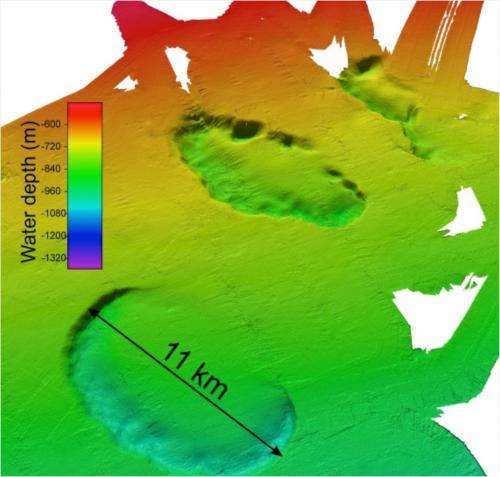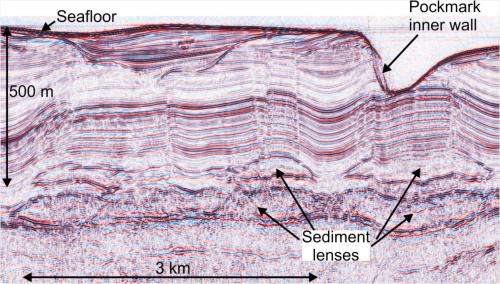NRL geochemistry survey at Chatham Rise reveals absence of modern day greenhouse gas emissions

Geochemistry analysis conducted by the U.S. Naval Research Laboratory of fossil sediment injection structures off the New Zealand coast in February and March, reveal no presence of modern day expulsions of methane gas, a potential contributor to global 'greenhouse effect' warming.
The main focus of this most recent expedition was to investigate the geological origin of seafloor anomalies discovered during a 2007 marine-life survey on the Chatham Rise.
During the 2007 survey scientists discovered several large sea floor craters, or pockmarks, including a giant 11 kilometers by 6 kilometers pockmark in water depths of about 1,000 meters, considered immense compared with pockmarks observed elsewhere in the world,
Scientists from Germany, New Zealand and United States used the two-leg voyage aboard the German research vessel, R/V Sonne, to map and investigate giant seabed features and subsurface structures characteristic of large scale gas-rich fluid migration about 500 kilometers east of Christchurch, South Island, New Zealand.
While the gas and related sediment chemistry results demonstrate this system is no longer geochemically active, these very large pockmarks—11 kilometers by 6 kilometers in diameter and 100 meters deep—are part of a much larger field of many thousands of smaller pockmarks that extends eastward along the Chatham Rise. Covering approximately 20,000 kilometers of seafloor, these pockmarks suggest sporadic gas escape may be occurring, possibly only during glacial intervals that occur approximately every 20,000 years.
"Geochemical analyses of the sea floor craters taken during the second leg of the voyage displayed no indication of a vertical methane flux through the sediment as indicated by the first part of the voyage," said Richard Coffin, chief scientist, NRL Chemistry Division. "This result suggests that gas-charged fluid escape leading to the pockmark formation may have occurred in the past, but seafloor gas seeps are not currently active."
The first leg of the survey was to map the seabed and undertake a high-resolution three-dimensional (3D) seismic survey over some of the pockmarks to image the sub-seafloor. During the second leg of the expedition, Coffin led geochemical investigations at four distinct Chatham Rise locations based on data from the seismic surveys. Piston and multi coring was conducted for geochemical evaluation of sediment and pore water to assess current and past day vertical fluid and gas fluxes.

"The apparent absence of methane in the shallow sediment and water column at the giant pockmark area was a surprise given the first leg results," Coffin said. "Onboard analysis showed no current day flux of deep sediment thermogenic or biogenic methane to the shallow sediment."
Scientists believe the latest results indicate the pockmarks are formed by gas escape that has come from rocks buried deep beneath the rise. Methane may have escaped during vigorous ancient degassing from under the seafloor into the ocean with significant implications for climate change and ocean acidification.
On-going seismic interpretation and pore water chemistry studies, to be undertaken by the international team of investigators, is expected to clarify the history of the enigmatic giant pockmarks and underlying sedimentary structures.
Provided by Naval Research Laboratory



















